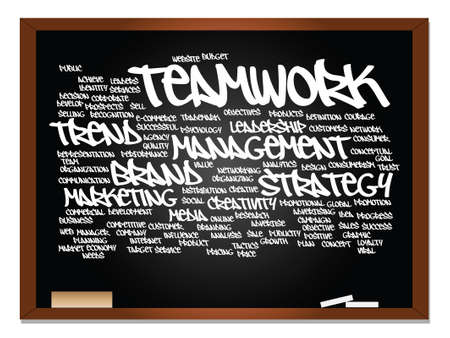Understanding Mental Health in the American Workplace
Mental health has become a major topic for professionals across the United States. In today’s fast-paced work environment, employees face unique pressures that can affect their emotional and psychological well-being. Let’s explore why mental health matters at work, what challenges American professionals often encounter, and how workplace culture is changing to support mental well-being.
Why Mental Health Matters for Professionals
Good mental health allows employees to be productive, creative, and engaged at work. When people feel supported emotionally, they’re more likely to perform well and stay motivated. On the other hand, ignoring mental health can lead to burnout, absenteeism, or even high turnover rates.
Common Challenges Faced by American Professionals
| Challenge | Description |
|---|---|
| Workplace Stress | Deadlines, heavy workloads, and job insecurity can create ongoing stress. |
| Work-Life Balance | Many struggle to balance career demands with family and personal life. |
| Stigma Around Mental Health | Some professionals worry about being judged if they seek help. |
| Lack of Access to Resources | Not everyone knows where to find support or how to use available benefits. |
The Evolving Culture of Workplace Well-Being
The good news is that workplace attitudes about mental health are changing in the U.S. More companies recognize that supporting employee well-being is not just the right thing to do—it also makes good business sense. Modern workplaces are introducing initiatives like Employee Assistance Programs (EAPs), flexible schedules, and open conversations about mental health to create a more supportive environment for all professionals.
2. Key Mental Health Resources Available to Professionals
Mental health support is more accessible than ever for American professionals. Whether you’re looking for confidential counseling, quick advice, or ongoing therapy, there are several main types of resources available. Here’s an easy-to-understand overview of the most common options:
Employee Assistance Programs (EAPs)
Many employers in the U.S. offer Employee Assistance Programs as part of their benefits package. EAPs provide free and confidential resources to help employees manage personal and work-related problems. Services often include short-term counseling, referrals to mental health professionals, and support for issues like stress, anxiety, depression, substance abuse, and family challenges. To access your EAP, check with your HR department or your company’s internal website.
Insurance-Covered Therapy
If you have health insurance through your employer or the marketplace, many plans now cover mental health services just like physical health care. This means you can see licensed therapists, psychologists, or psychiatrists for a range of needs. Coverage details vary by plan—some require a co-pay or deductible, while others might limit the number of visits per year. Always verify with your insurance provider before booking an appointment.
| Resource Type | How to Access | Cost |
|---|---|---|
| Employee Assistance Program (EAP) | Contact HR or company intranet | Free for employees |
| Insurance-Covered Therapy | Find an in-network provider via insurance portal | Varies (co-pay/deductible may apply) |
| Counseling Hotlines | Call national or local helplines (e.g., 988 Suicide & Crisis Lifeline) | Free and confidential |
| Digital Wellness Platforms | Sign up online or via mobile app (e.g., Headspace, BetterHelp) | Subscription-based; some employers offer free access |
Counseling Hotlines and Helplines
If you need immediate support or someone to talk to right away, hotlines are a lifeline. The 988 Suicide & Crisis Lifeline is available nationwide 24/7 for anyone experiencing emotional distress or a mental health crisis. Other specialized hotlines exist for veterans, LGBTQ+ individuals, and more. These services are free and confidential.
Digital Wellness Platforms
Technology has made it easier than ever to take care of your mental well-being from anywhere. Digital platforms like Headspace, Calm, BetterHelp, and Talkspace provide everything from guided meditation and stress management tools to virtual therapy sessions with licensed professionals. Some employers partner with these platforms to offer them at no cost to employees—check with your HR team to see what’s available.

3. How to Access Mental Health Support Services
Step-by-Step Guide to Navigating Mental Health Resources
Mental health support is more available than ever for American professionals, but knowing how to access it can sometimes feel overwhelming. Here’s a straightforward guide to help you make the most of your options.
Step 1: Explore Employer-Provided Benefits
Many employers offer mental health resources as part of their benefits package. Common resources include Employee Assistance Programs (EAPs), counseling sessions, and wellness programs. Here’s how you can find out what’s available:
| Action | Details |
|---|---|
| Check Your Employee Handbook or Benefits Portal | Look for sections about mental health, wellness, or EAPs. |
| Contact HR or Benefits Team | Ask specific questions about coverage and how to access services. |
| Review Open Enrollment Materials | These documents often highlight new or updated mental health benefits. |
| Use EAP Hotline or Website | EAPs are confidential and can connect you with counselors quickly. |
Step 2: Use Your Health Insurance for Mental Health Care
If your employer provides health insurance, it likely covers some form of mental health care. Here’s what to do:
- Log in to Your Insurance Portal: Search for “mental health” or “behavioral health” providers in your network.
- Call the Customer Service Number: Ask for a list of in-network therapists or clinics near you.
- Verify Coverage: Confirm copays, deductibles, and if pre-authorization is needed before starting therapy.
- Schedule an Appointment: Contact a provider directly to set up a visit—many now offer telehealth options.
Tip: Don’t hesitate to ask if virtual appointments are covered, as this can save you time and provide flexibility.
Step 3: Find Reputable External Resources for Support
If you’re not comfortable using employer-provided options or want additional support, many reputable organizations offer help:
| Resource Name | Description | How to Access |
|---|---|---|
| National Alliance on Mental Illness (NAMI) | Offers helplines, support groups, and education nationwide. | Visit NAMI website |
| Mental Health America (MHA) | Screens for mental health conditions and provides community resources. | Visit MHA website |
| Crisis Text Line | Free 24/7 crisis support via text message. | Text HOME to 741741 from anywhere in the US |
| SAMHSA Helpline | The Substance Abuse and Mental Health Services Administration offers referrals and information 24/7. | Call 1-800-662-HELP (4357) or visit their site |
If you’re ever unsure where to start, reaching out to any of these organizations can guide you toward the right type of support. Remember, taking the first step is important—and there are people and resources ready to help you navigate your mental health journey.
4. Creating and Sustaining a Supportive Work Environment
Why a Supportive Workplace Matters
For American professionals, having a supportive work environment is crucial for good mental health. When employees feel safe to speak up about their mental health needs, they’re more likely to seek help early and stay productive at work.
Strategies to Encourage Open Conversations
Opening up about mental health can be tough. Here are some simple ways companies can encourage honest conversations:
| Strategy | Description |
|---|---|
| Host Regular Check-Ins | Managers can schedule one-on-one or team check-ins to talk about well-being, not just work tasks. |
| Lead by Example | Leaders who share their own experiences with stress or seeking help make it easier for others to do the same. |
| Offer Anonymous Feedback Channels | Anonymous surveys or suggestion boxes allow employees to share concerns without fear of judgment. |
Reducing Mental Health Stigma in the Workplace
Mental health stigma can stop employees from asking for support. Here’s how organizations can reduce stigma:
- Provide Training: Offer workshops on mental health awareness for both staff and management.
- Share Educational Resources: Distribute articles, videos, or invite speakers to discuss common mental health issues.
- Acknowledge Mental Health Days: Normalize taking time off for mental well-being, just like for physical illnesses.
- Highlight Success Stories: Share stories (with permission) of team members who have benefited from mental health resources.
Building a Safe Culture for Seeking Help
A safe culture means employees know where to find help and trust they won’t be penalized for using these resources. Here are some key steps:
| Action Step | How It Helps Employees |
|---|---|
| Clear Communication of Resources | Makes it easy to find counseling services, hotlines, or Employee Assistance Programs (EAPs). |
| Confidentiality Guarantees | Assures employees that their privacy will be respected when seeking support. |
| Peer Support Groups | Creates a sense of community and reduces isolation among employees facing similar challenges. |
| No Negative Consequences Policy | Makes clear that seeking help will not affect job security or advancement opportunities. |
The Role of Managers and HR Professionals
Managers and HR teams play a big part in creating supportive environments. They should listen actively, respond empathetically, and guide employees toward available mental health resources whenever needed.
5. Tips and Tools for Ongoing Mental Wellness
Maintaining good mental health is an ongoing process, especially for busy American professionals who juggle work, family, and personal commitments. Here are some practical tips and tools to help you manage stress, build resilience, and access reliable support when you need it.
Self-Care Routines That Make a Difference
Simple daily habits can go a long way in supporting your mental well-being. Try incorporating these self-care routines into your schedule:
| Self-Care Activity | How to Get Started | Benefits |
|---|---|---|
| Physical Exercise | Take a 20-30 minute walk, join a fitness class, or do at-home workouts 3-4 times a week. | Boosts mood, reduces anxiety, improves sleep quality. |
| Healthy Eating | Plan balanced meals with fruits, veggies, lean proteins, and whole grains; limit processed foods. | Stabilizes energy, supports brain function. |
| Sleep Hygiene | Aim for 7-9 hours of sleep; keep a regular bedtime and wind down with calming activities. | Enhances focus, emotional stability, and resilience. |
| Digital Detox | Set screen time limits; unplug from devices at least an hour before bed. | Reduces stress and improves sleep quality. |
Mindfulness Practices You Can Start Today
Mindfulness helps you stay grounded and present, even during stressful moments at work or home. Here are easy practices to try:
- Deep Breathing: Take five slow, deep breaths whenever you feel overwhelmed.
- Guided Meditation: Use free apps like Calm or Insight Timer for short guided sessions.
- Mental Check-Ins: Set reminders to pause and notice your thoughts and feelings throughout the day.
- Gratitude Journaling: Write down three things youre grateful for each evening.
Finding Reliable Information and Community Support
If youre looking for trustworthy mental health resources or want to connect with others who understand what youre going through, check out these options commonly used by American professionals:
| Resource Type | Description | Where to Find It |
|---|---|---|
| Mental Health Hotlines | 24/7 phone support for immediate help or guidance. | 988 Suicide & Crisis Lifeline |
| Online Support Groups | Virtual communities for sharing experiences and advice on specific topics (e.g., anxiety, burnout). | NAMI Forums, Reddit’s r/mentalhealth, Meetup.com groups |
| EAP Services (Employee Assistance Program) | Your employer may offer free counseling sessions or referrals as part of your benefits package. | Contact your HR department or check your employee handbook. |
| Mental Health Apps | User-friendly tools for self-help, meditation, therapy exercises, and tracking mood. | Calm, Headspace, BetterHelp, Talkspace (available on app stores) |
| Educational Websites | Accurate information about mental health conditions and coping strategies. | National Institute of Mental Health (NIMH), MentalHealth.gov |
Your Next Steps: Make Mental Wellness a Priority
The most important thing is to start small and be consistent—whether that means making time for daily walks or reaching out to a support group when you need encouragement. Remember: taking care of your mental health is just as vital as physical health. Utilize these tools and resources to create a sustainable routine that works for you as a professional in today’s fast-paced environment.


